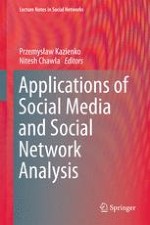2015 | OriginalPaper | Buchkapitel
Indifferent Attachment: The Role of Degree in Ranking Friends
verfasst von : David Liben-Nowell, Carissa Knipe, Calder Coalson
Erschienen in: Applications of Social Media and Social Network Analysis
Aktivieren Sie unsere intelligente Suche, um passende Fachinhalte oder Patente zu finden.
Wählen Sie Textabschnitte aus um mit Künstlicher Intelligenz passenden Patente zu finden. powered by
Markieren Sie Textabschnitte, um KI-gestützt weitere passende Inhalte zu finden. powered by
